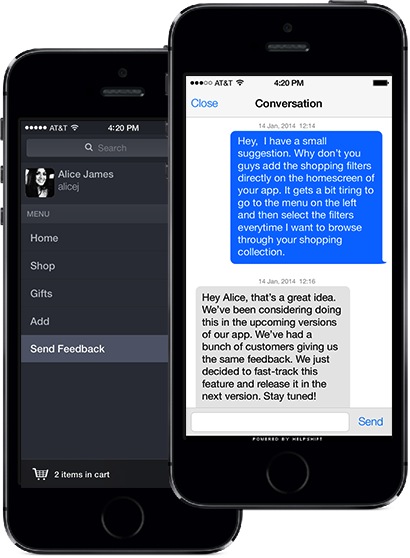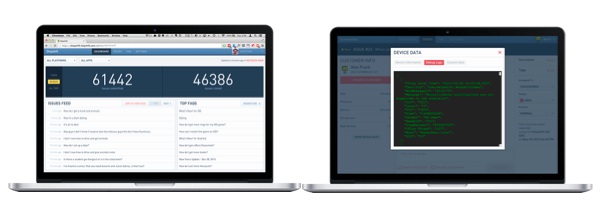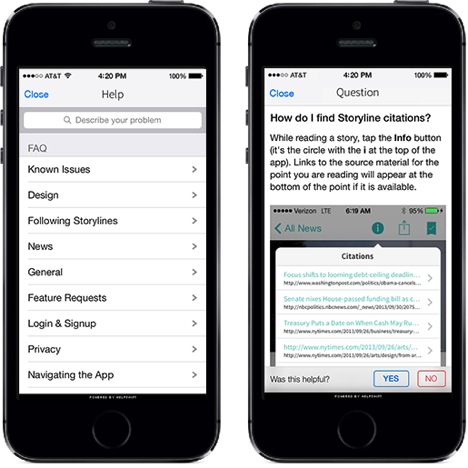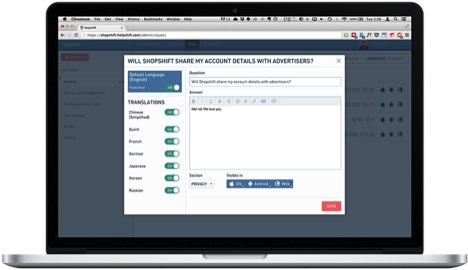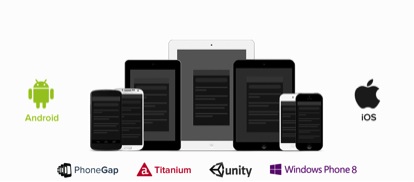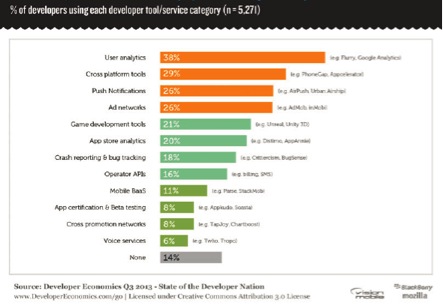Helpshift is a SaaS CRM platform for the mobile first world. Embracing the new world where messaging is more frequent than emails, it provides an in-app messaging channel of communication to connect users with companies from within their mobile apps. Helpshift is founded by Abinash Tripathy and Baishampayan Ghose (BG) who came together to build a technology company out of India with hacker culture, design thinking and customer service as its core DNA.
Introduction
In a mobile eco-system, an app developer has to focus on 3 things:
Development
Distribution
Monetization
Development is getting easier due to platforms that offer Mobile backend, device abstraction layers, and design tools. Distribution is easy now since app stores take care of that. Monetization is where interesting things happen.
Monetization in Mobile eco-system
The web is largely about publishing and it is only natural that the primary monetization model of the web is through advertising. In the mobile app era, ad revenue are still low (around 25% on iOS), and a large chunk of revenue comes from in-app purchases (sale of product or services within an app, usually digital goods that enhance the app experience) and pay-per-download. The difference is important.
Ad revenue means that those who pay for the product or service (advertisers) are not the ones who consume these products or services (users). While there is an ultimate dependency on users being satisfied, the impact of an unsatisfied user on revenue is usually delayed and sometimes lost. A user walking away doesn’t immediately impact revenue. Expectation of the user is low because they haven’t paid for it.
For in-app and pay-per-download revenue streams, impact of an unsatisfied user is much more evident because those who pay are those who use, and any dissatisfaction can immediately impact the revenue. A user walking away reduces the revenue immediately. Also, the expectation of the user from the app is high because they paid for it.
Customer Service becomes Key
For a mobile world where ad revenue is a less prevalent means of monetization, it is critical for the products or services to keep their users engaged and satisfied; every single one of them.
Customer Service will become the most important function in this type of economy. A mobile game developer has to now act as a commerce company like Amazon and provide customer service to their customers. For example, even a small game studio (one of their customers) who built a top grossing game is seeing 2000+ tickets a day from their customers and needs to effectively manage this massive volume, solve their customers problems and keep them happy and playing the game.
Helpshift Advantage
Servicing customers is not an easy problem to solve because app stores tend to be the intermediaries between app developer and the users, rather than letting the developer and user connect directly. This is the problem Helpshift helps to solve. They offer a SaaS customer service platform for the mobile first world through which app developers and their customers can have a direct, 2-way communication channel right in the app.
App developers can use the Helpshift SDK for their supported platforms (iOS, Android, Unity, Phonegap and HTML5) to build this 2-way communication channel to service their customers as an experience embedded in their app. For example, the small game studio described above built a self-service feature powered by Helpshift that prevents more than 95% of customer issues from turning into tickets and the developer gets a ticket management dashboard that is built with a scalable real-time architecture enabling their 7 agents to be very efficient.
The Helpshift Service
Helpshift is a helpdesk/CRM solution for mobile world. Once integrated in the app, they offer a large number of features to the developers to keep their customers engaged and happy. Here is a look at some of the important benefits app developers get through from Helpshift.
Get feedback from customers
Getting feedback is as simple as communicating with the customers through the in-app messaging that Helpshift provides. This is especially important for the upcoming apps or small developers that need inputs to tweak their offering and reach a scale when monetization will be a possibility. They can also reach out to inactive users (because inactive users don’t delete the app, they just stop using it) and entice them back with offers etc.
Effective issue resolution
Helpshift captures detailed device diagnostics, customer information, and debug logs, which means the developers can troubleshoot with precision and respond quickly and accurately to their customers
Reduce ticket volume
Customers can quickly find answers to common questions and don’t need to raise a ticket. Solutions to previously resolved issues can be offered to new customers who face similar problems.
Support global audience
Helpshift auto-caters content in local languages, so they can get the help they need. Admins need to provide the localized version of their help content and Helpshift delivers the right content in the right geography.
Easy Integration
Helpshift provides native SDK and rich documentation and support to the app developer, making the integration very easy and quick for the developers. A typical integration can be done in hour, extra activities like language customization, skinning etc. can take up to a week or two.
Differentiators
Some things stand out as differentiators:
Robust SDK – SDKs are hard to do as they reside inside an app and can do bad things like leak memory, consume CPU resources and crash apps. Mobile App developers have a very high bar for selecting SDKs and they have hundreds of app developers vouching for them within a year of their formal launch.
Scalable Dashboard – Their web-based management dashboard that their clients use is optimized for workflow efficiency and highly scalable and performant.
Big Data/Analytics – As a CRM for the mobile era, they handle massive volumes of data. For example, a top game will see >100M app sessions in a single day and they have to process up to 10,000 customer tickets in a day. They have built a data platform that can store this volume of data and provide insights to companies that they can use to run their business.
Machine Intelligence – To address the scale, they are developing a lot of machine learning technologies to help augment the human process and make them efficient.
Development Process
Team – Their product team consists of a product lead in San Francisco who works with their customers to create the pipeline of what they need to deliver to the market. He works with the 4 product designers in Pune to put together specs and design the features.
Their engineering team is located in Pune, India, and is organized as follows:
Backend team that is largely working on Clojure (a modern Lisp that runs on the JVM) and a variety of infrastructure to support the backend
Mobile SDK team that delivers their mobile SDK on iOS, Android, Unity and Phonegap
Web front-end team that largely does HTML, CSS and JavaScript
Quality engineering team that work on automated testing
Their choice of programming language for their platform is interesting. Clojure is not a common language that people program in. Of course, it helps that one of the co-founders (BG) is a leading authority on Clojure. It helps in another interesting way, that Abinash was quick to point out: since this is not a programming language that people learn to earn their bread as a programmer, people who know this language are most likely to be passionate about coding, which augurs well for any development team. 99.9% of their hiring is inbound, they don’t post job openings.
Process
As a company, they are very design oriented and spend a lot of time in the design process iterating on the best interaction models for their customers. The spec is iterated on by the product lead, a designer, engineers and quality engineering folks until everyone is satisfied that they have a high quality feature that will be delivered. They then schedule it in a sprint and deliver the feature to their customers.
Given this cross-site team structure, they spend lots of time writing a detailed spec to make sure there is no ambiguity in ‘what needs to be built’. They use Google docs for collaboration across time zones. They then create detailed mock-ups, again with a view to make the requirements crystal clear. Spec cycle can take as little as 1 week or as much as 6 weeks. Feature can ship within 2-4 weeks of spec complete.
They are a young team and take their work as craft. The company believes that software products need to be crafted and not built (see this amazing video of their Product Designer Nilesh at work). This is an entirely different approach to product development.
Market
Their market is largely outside India though they have some fairly large Indian customers like Flipkart and Gaana.com (Times Group). Their customers are some of the largest mobile game developers, mobile first commerce companies etc. Their competitors tend to be the traditional web era CRM platforms like Zendesk and Desk.com. There are a few startups that also compete in this space like Apptentive, Appboy and Hipmob. Currently there are more than a million unique apps published in the various app stores and thousands of new apps are being submitted every day. However, there is very low adoption rate for such SDKs by developers (it doesn’t figure in top 12 developer tools).
A year into the business since their launch, they have over 300 apps live in the app store using their SDK. In the first year, their focus has been to achieve product market fit and work with a few customers as partners and turn them into advocates, and they have been successful in that so far. In this early market, it is really important to win the innovators / leaders in this space. They are very disciplined about adding features in the product and are not shy to tell a customer that they cannot deliver something, if it doesn’t fit the needs of entire customer base or doesn’t fit their vision for the product. They are focused on delivering high quality and workflow efficiency and want to compete on that rather than just features.
Product Roadmap
From product perspective, they have 2 focus areas in next 12 months
Mobile Marketing Automation
The big problem in Mobile apps is that retention rate (% of users continuing to use the app after first use) is very low.
The industry as a whole has not matured to this yet and most app companies are busy acquiring new customers or getting them to the point of download.
Web apps / services could market to their users by simply making use of cookies to follow a visitor to their website around on the Internet and displaying a banner (also called re-targeting) or by running email campaigns. The mobile app industry does not allow users to be re-targeted. Apple recently cracked down on apps that were using the IDFA to identify users across apps.
Apple also does not allow apps to collect email addresses of users and hence most apps do not have a signup / registration flow unlike web apps (Apple Appstore Review Guideline (developer login required) #17.2: Apps that require users to share personal information, such as email address and date of birth, in order to function, will be rejected).
Helpshift wants to be the company that helps mobile app developers engage and retain customers by simply enabling them to talk to each other. The key to marketing after all is effective communication.
Machine Augmented Workflows
A small app developer can face enormous scale in mobile when the app goes viral. To help small teams process massive volumes of communication from customers, they are working on features to augment the human workflow to address scale, for example, clustering similar issues using machine learning algorithms and responding automatically in bulk. These are hard to do technically but deliver huge benefits to their customers.
The Road Ahead
Helpshift has spent its first year in building a great technology and building a roster of highly satisfied marquee customers. As they go forward, they now need to focus on scaling marketing and sales to grow the business. This is going to be hard for 3 reasons:
1. They may be too early in the app economy. There are more than 700 million web sites out there, but only about a million apps and the focus for most of them is still on customer acquisition rather than retention. So their growth is tied to how app economy is going to grow
2. Competitors – Large CRM providers have mobile aspirations and small startups are coming up quickly who have similar-looking offering as Helpshift.
3. Long sales cycle – Enterprise sales are quite long, and depends on lots more factor than just product quality and richness.
However, the future looks bright for them, because they are in it for the long haul and willing to wait. They are very focused on making customers happy by providing the best product for their needs and not too focused on their competitors. Given that app economy has to eventually focus on customer engagement and retention, Helpshift is positioned as an early mover and can lead the market with their innovative and high-quality offering.
Advice to product companies in India
Based on their experience, Helpshift founders have a few tips to share with other product companies:
Build a product that your customers love.
Have intense focus on quality, ultimately high-quality products will score in the market.
Be the leader, not follower. Innovate, don’t just copy and create a cheaper product
Focus on people


